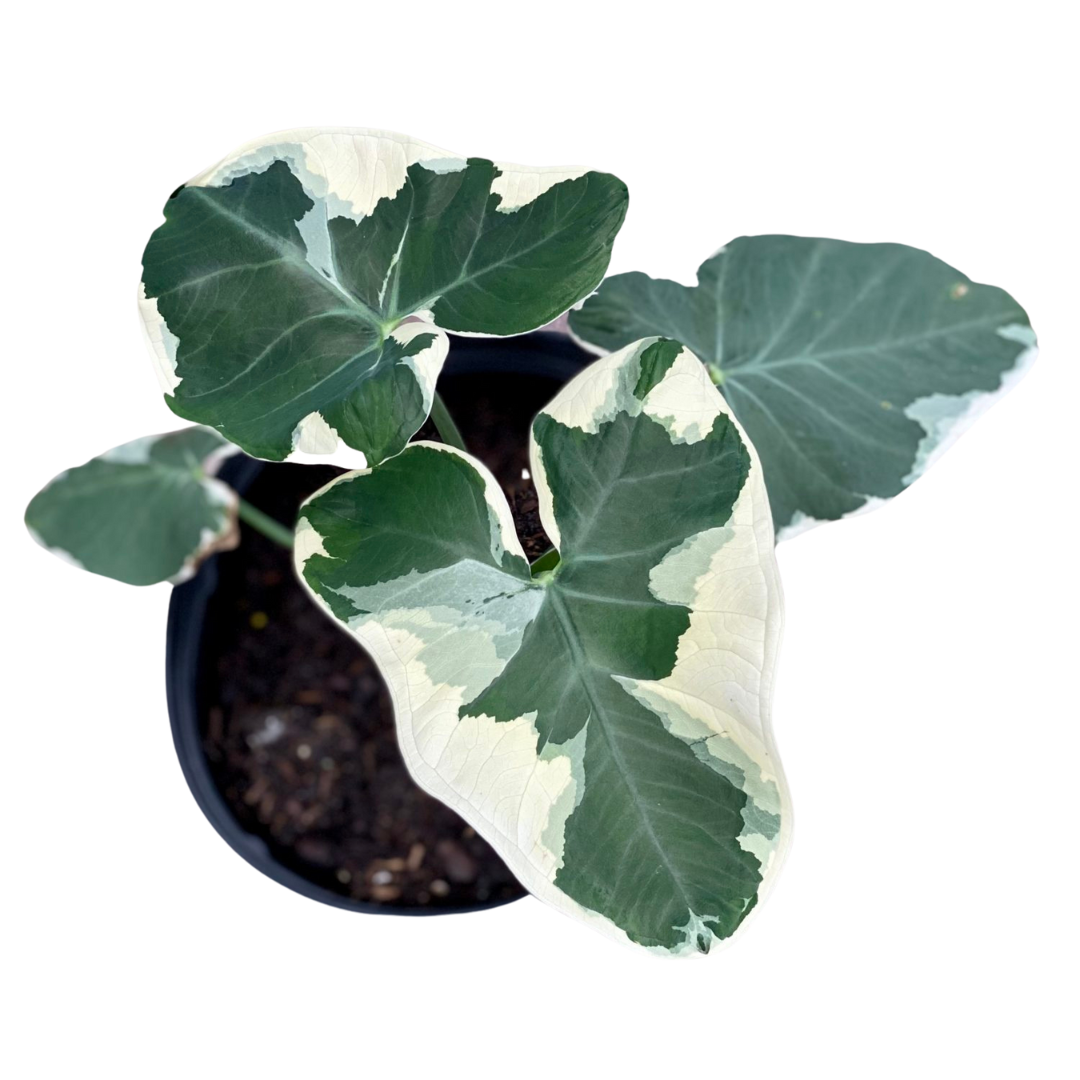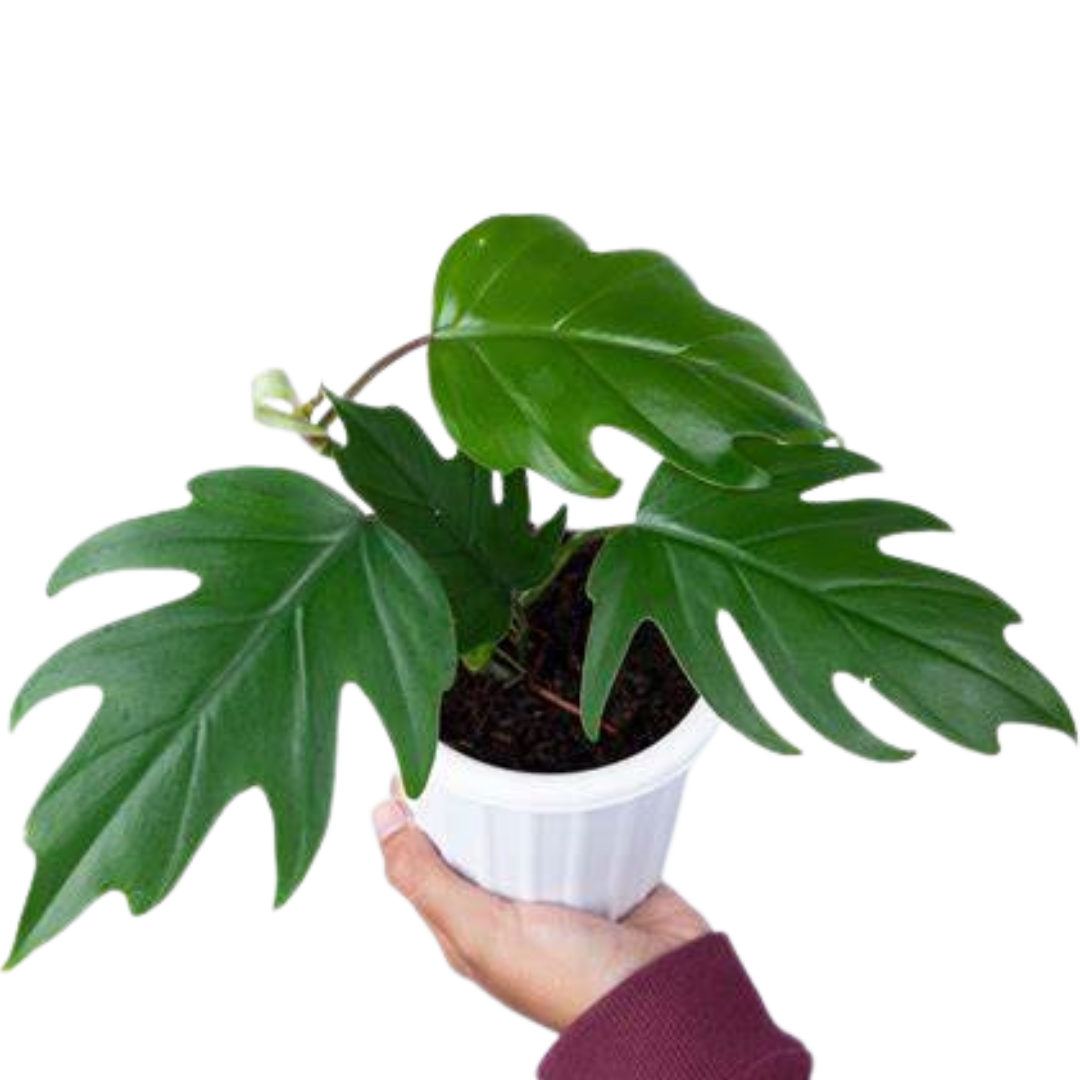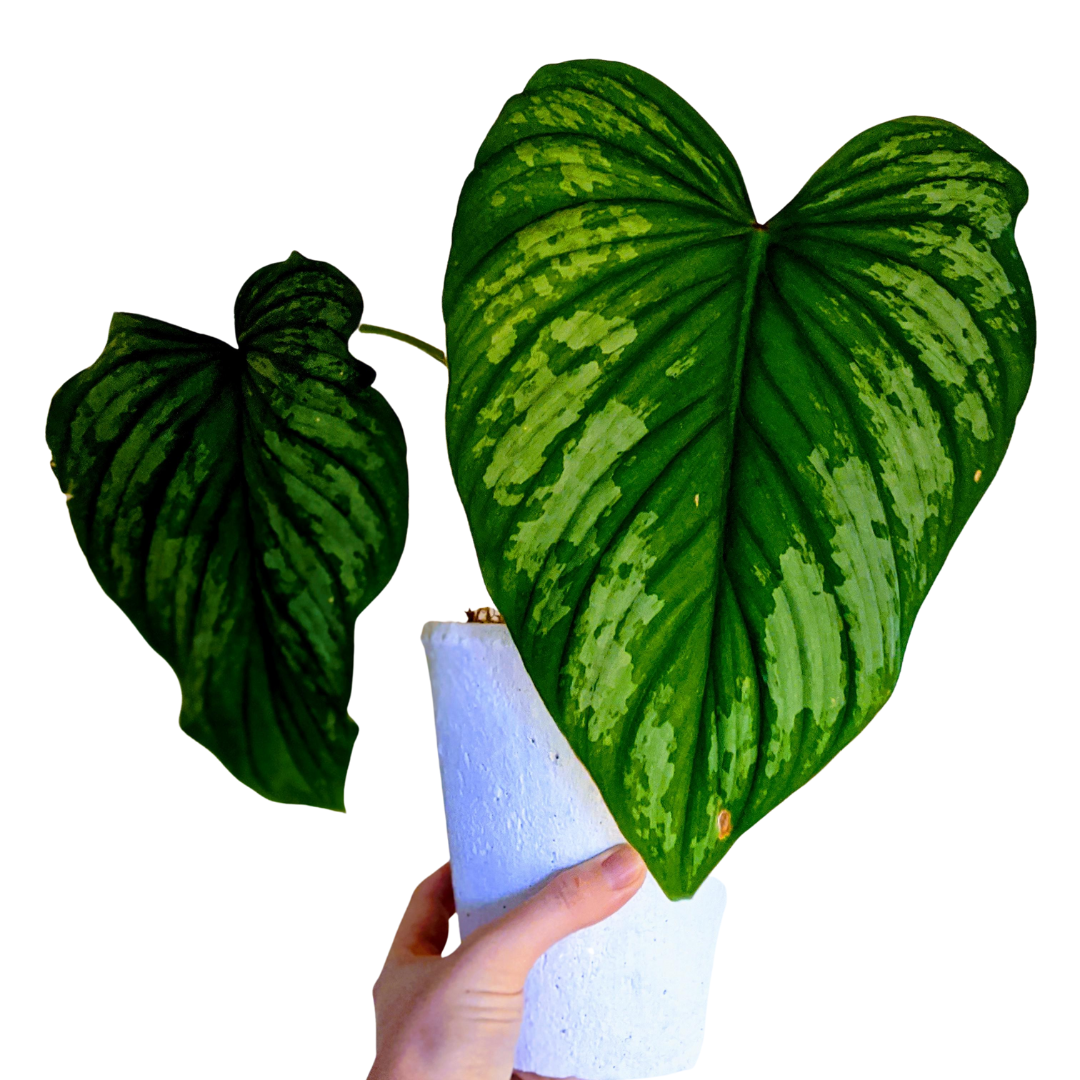Native to Central America, these Philodendrons were discovered in nature growing over rocks in tropical forests. This species’ leaves grow in from its trunk as thin, blade-like stems with feathery leaves on top. If you are lucky enough to catch a Philodendron Warszewiczii (pronounced var-she-VICH-e-eye) in bloom, the flowers are a stunning white! Ever since discovery in 1855, the Philodendron Warszewiczii has been a well-enjoyed tropical plant that can still be difficult to come by and is swiftly becoming a popular addition to rare plant collections.
The famed Philodendron Warscewiczii ‘Aurea’ is highly sought after for it’s bright neon leaves that spread like a starburst. This is an avid climber, but the thick stem of this philodendron will support its foliage up to 3 – 4ft. before requiring a moss pole.
Watering: Water when top 2-3" of soil is dry until water drains from bottom of pot. Do not leave sitting in drainage.
Light Requirements: Bright, indirect light and can even tolerate direct, morning sun.
Humidity Needs: 50-70% is ideal. You can boost your Colorado dry air with pebble trays nearby and/or clustering with other humidity lovers.
Soil Preference: Requires a well-draining soil mix rich in organic matter that allows water retention but helps prevent root rot. A peat-based soil mix with additional perlite and/or orchid bark is ideal.
Fertilizing: Regularly apply a well-balanced fertilizer every 1-2 weeks during spring/summer months.
Repotting: Repot in early spring/summer when soil is too compact or there are exposed roots. Repot a minimum of every 2-3 years to ensure soil nutrients.
Pet Safe: No
Common Issues: Overwatering leading to root rot and underwatering are the most common issues for maintaining a healthy Philodendron. Yellowing/discolored leaves = overwatering, brown/crispy leaves = underwatering. Spider mites and mealy bugs are also common pests.

*Aurea leaves mature into the same highly fenestrated shape, but do not darken in color.
Leave a comment
Comments will be approved before showing up.






